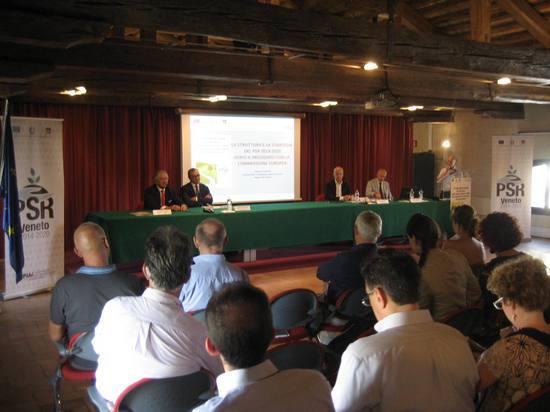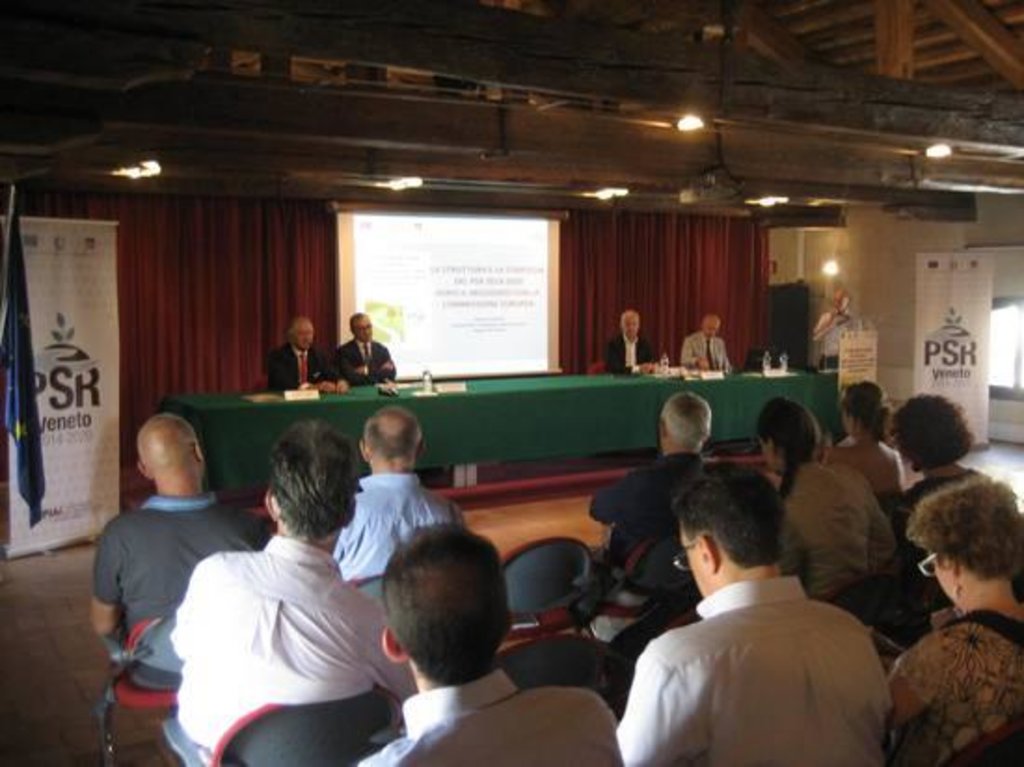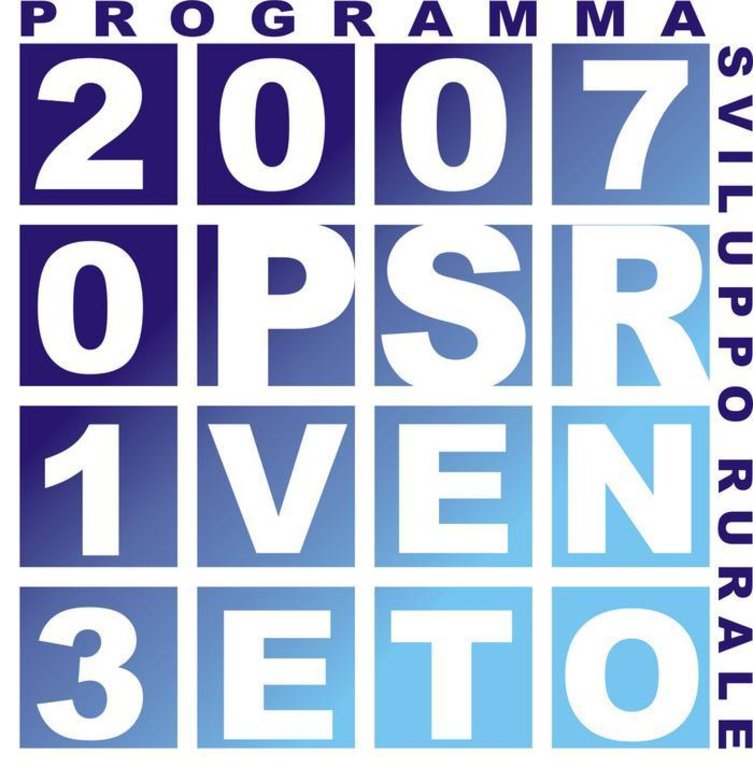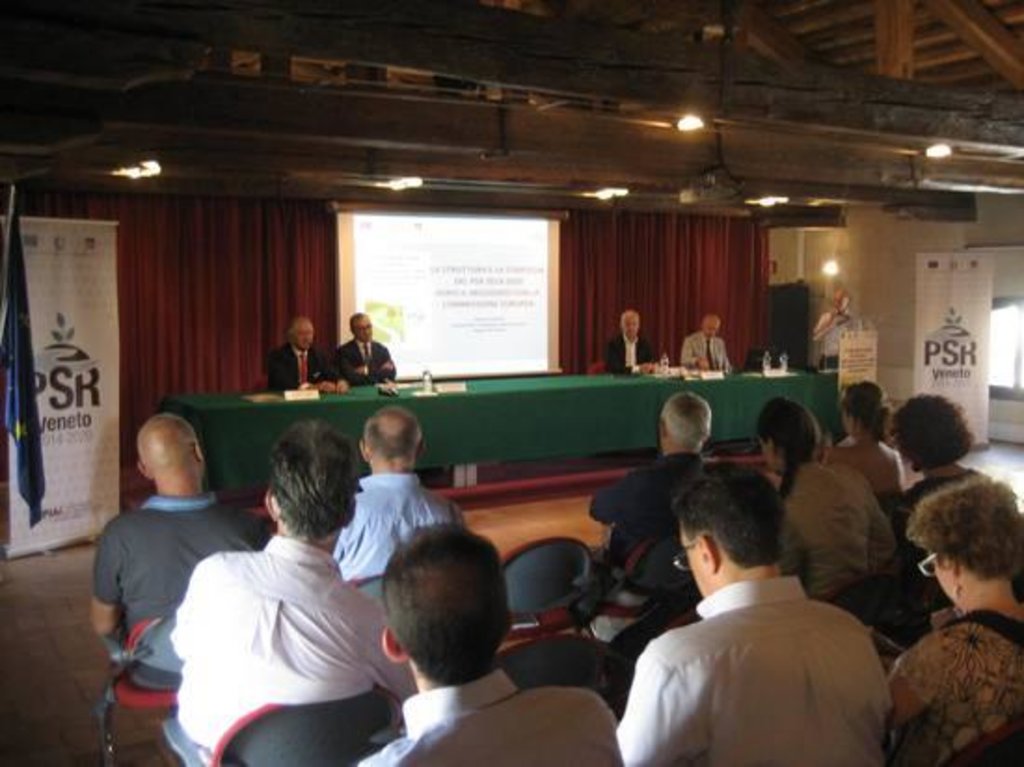Rural development programme in the Veneto region [อิตาลี]
- ผู้สร้างสรรค์:
- การอัพเดท:
- ผู้รวบรวม: Nicola Dal Ferro
- ผู้เรียบเรียง: –
- ผู้ตรวจสอบ: Fabian Ottiger
Programma di sviluppo rurale in Veneto
approaches_2598 - อิตาลี
ดูส่วนย่อย
ขยายทั้งหมด ย่อทั้งหมด1. ข้อมูลทั่วไป
1.2 รายละเอียดที่ติดต่อได้ของผู้รวบรวมและองค์กรที่เกี่ยวข้องในการประเมินและการจัดเตรียมทำเอกสารของแนวทาง
ผู้เชี่ยวชาญ SLM:
Morari Francesco
DAFNAE - University of Padova
อิตาลี
ชื่อของโครงการซึ่งอำนวยความสะดวกในการทำเอกสารหรือการประเมินแนวทาง (ถ้าเกี่ยวข้อง)
Preventing and Remediating degradation of soils in Europe through Land Care (EU-RECARE )ชื่อของโครงการซึ่งอำนวยความสะดวกในการทำเอกสารหรือการประเมินแนวทาง (ถ้าเกี่ยวข้อง)
University of Padova (UNIPD) - อิตาลีชื่อของโครงการซึ่งอำนวยความสะดวกในการทำเอกสารหรือการประเมินแนวทาง (ถ้าเกี่ยวข้อง)
Programma Sviluppo Rurale 2003-2017 - อิตาลี1.3 เงื่อนไขที่เกี่ยวข้องกับการใช้ข้อมูลที่ได้บันทึกไว้ผ่านทาง WOCAT
วันที่เก็บรวบรวมข้อมูล (ภาคสนาม):
22/04/2015
ผู้รวบรวมและวิทยากรหลักยอมรับเงื่อนไขเกี่ยวกับการใช้ข้อมูลที่ถูกบันทึกผ่านทาง WOCAT:
ใช่
1.4 การอ้างอิงถึงแบบสอบถามเรื่องเทคโนโลยี SLM
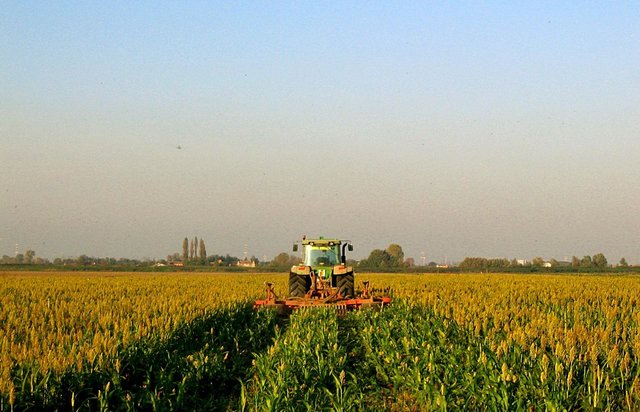
Continuous soil cover on croplands [อิตาลี]
Maintenance of continuous soil cover; alternating crops and cover crops as a practice to improve soil quality and reduce diffuse agricultural water pollution
- ผู้รวบรวม: Nicola Dal Ferro
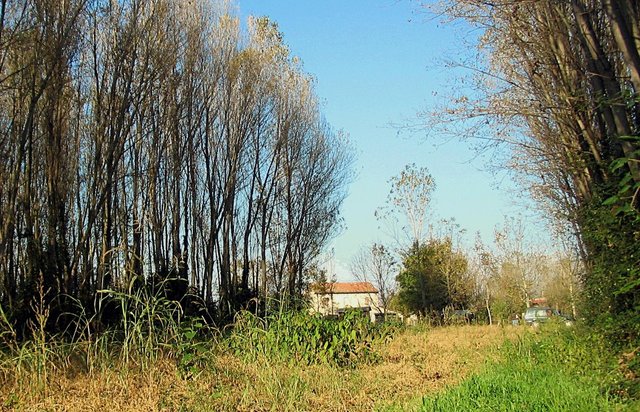
Agroforestry system [อิตาลี]
Silvo-arable systems for production of annual crops on tree plots
- ผู้รวบรวม: Nicola Dal Ferro
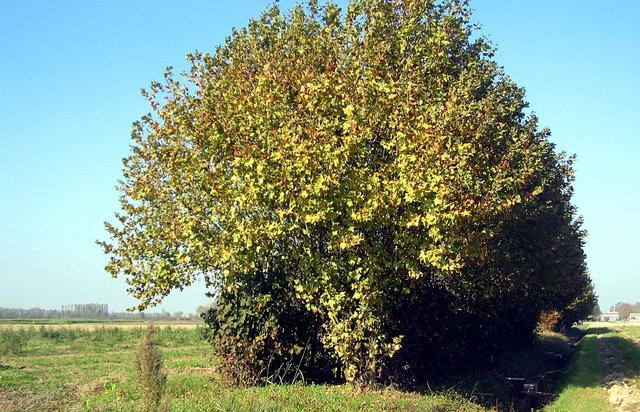
Vegetated buffer strips [อิตาลี]
Buffer vegetation of agricultural land bordering to prevent nonpoint surface water pollution and soil erosion
- ผู้รวบรวม: Nicola Dal Ferro
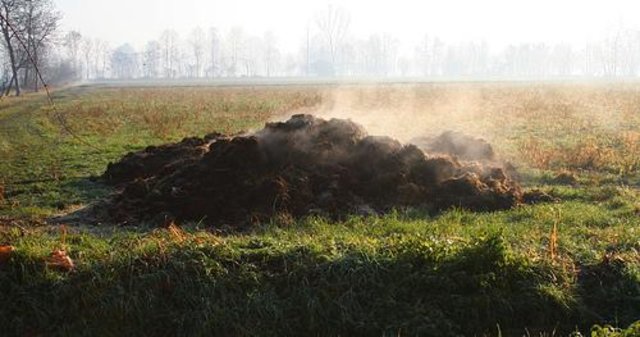
Re-introduction of organic amendments in croplands [อิตาลี]
Re-introduction of biosolids to improve fertility of mineral soils
- ผู้รวบรวม: Nicola Dal Ferro
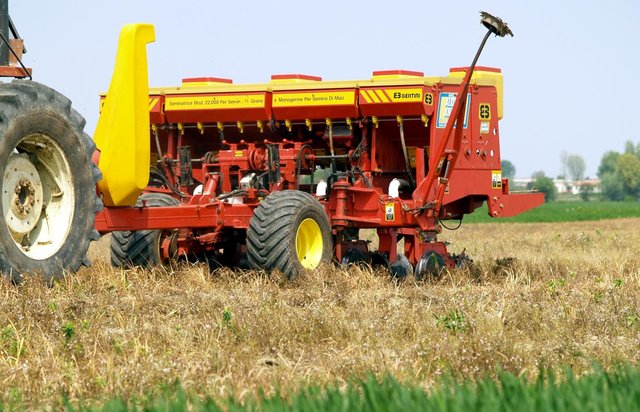
Conservation agriculture [อิตาลี]
Sustainable crop production and residue management under no-tillage to improve soil fertility and increase environmental benefits
- ผู้รวบรวม: Nicola Dal Ferro
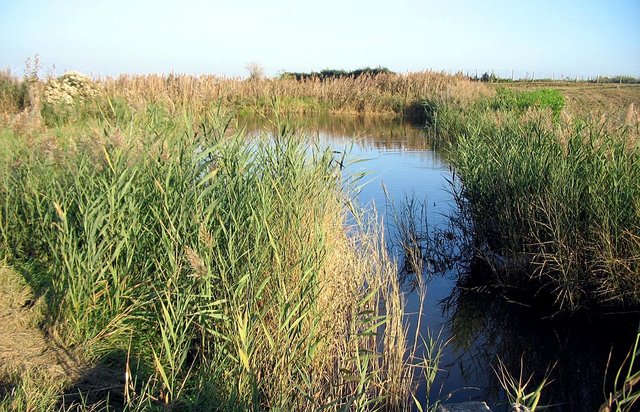
Wetland system [อิตาลี]
Vegetated water basins for the control of diffuse pollution
- ผู้รวบรวม: Nicola Dal Ferro
2. คำอธิบายของแนวทาง SLM
2.1 การอธิบายแบบสั้น ๆ ของแนวทาง
Developing rural areas in the Veneto region through sustainable land management policies
2.2 การอธิบายอย่างละเอียดของแนวทาง
การอธิบายอย่างละเอียดของแนวทาง:
Aims / objectives: The objective of the Rural Development Programme (RDP) is to improve the farmers' activity by addressing economic, environmental and social challlenges. In this context, the RDP aims to grow the rural economy as well as improve the agro-environment. This is achieved by economically supporting: a) the multifunctionality of agriculture (e.g. crop production, natural environment, tourism etc.); b) the renovation of agriculture sector towards more efficient and competitive productive systems; c) the communities living and working in rural areas.
Methods: The Rural Development Programme is carried out through subsidies to farming practices following a cross-compliance principle. As a result, a combination of 'baseline' conservation measures with the RDP ones must be applied to achieve subsidised conservation measures.
Role of stakeholders: The level of subsidies is estimated on input or maintenance costs. Moreover, the yield loss is also taken into account due to implementation of some measures. These estimates were obtained through consultation among stakeholders, including farmer organisations, public enterprises and governments.
Other important information: The Rural Development Programme (RDP) in the years 2007-2013 was structured in four axes, corresponding to four lines of action: a) Improvement of competitiveness of the agricultural and forestry sector; b) Improvement of environment and rural areas; c) Improvement of quality of life and economic diversification in rural areas; d) Implementation of strategies for the local development.
2.3 รูปภาพของแนวทาง
2.5 ประเทศ ภูมิภาค หรือสถานที่ตั้งที่ได้นำแนวทางไปใช้
ประเทศ:
อิตาลี
ภูมิภาค/รัฐ/จังหวัด: :
Italy
ข้อมูลเฉพาะเพิ่มเติมของสถานที่ตั้ง:
Veneto region
2.6 วันที่เริ่มต้นและสิ้นสุดของแนวทาง
ระบุปีที่เริ่ม:
2007
การสิ้นสุดลง (ถ้าแนวทางไม่ได้ใช้อีกต่อไป):
2013
2.7 ประเภทของแนวทาง
- ใช้โครงงานหรือแผนงานเป็นฐาน
2.8 เป้าหมายหรือวัตถุประสงค์หลักของแนวทาง
The Approach focused mainly on SLM with other activities (fostering the competitiveness of agriculture; knowledge transfer; economic development in rural areas)
Rural development Programme (RDP) aims to improve both the socio-economic situation of rural areas as well as the agro-environmental quality. Main line of actions involve: a) increase of competitiveness of the agricultural and forestry sector; b) increase of environmental quality in rural areas; c) economic diversification of rural areas to promote a better quality of life.
The SLM Approach addressed the following problems: In the last decades, the over-simplification of agro-ecosystems due to intensive monoculture and high mechanisation led to reduced biodiversity, increased land degradation and water pollution and finally vulnerability of agroecosystems. A general low farm size and fluctuating commodity prices led to a reduction of incomes and inadequate generational turnover. These factors drove small farmers out of the market, especially in marginal areas, where the phenomenon has been associated to land abandonment (especially in hilly and mountainous areas).
2.9 เงื่อนไขที่เอื้ออำนวยหรือเป็นอุปสรรคต่อการนำเทคโนโลยีภายใต้แนวทางนี้ไปปฏิบัติใช้
บรรทัดฐานและค่านิยมทางสังคม วัฒนธรรม ศาสนา
- เป็นอุปสรรค
Land users are seldom tied to traditional systems and new technologies are difficulty adopted.
Treatment through the SLM Approach:
การมีไว้ให้หรือการเข้าถึงแหล่งการเงินและบริการ
- เป็นอุปสรรค
Fundings are sometimes very few for implementation of technologies
Treatment through the SLM Approach:
การจัดตั้งระดับองค์กร
- เป็นอุปสรรค
Treatment through the SLM Approach:
กรอบแนวทางในการดำเนินการด้านกฎหมาย (การถือครองที่ดิน สิทธิในการใช้ที่ดินและน้ำ)
- เอื้ออำนวย
The existing land ownership, land use rights / water rights moderately helped the approach implementation: The RDP is seen as an opportunity for the development of the rural areas and the adoption of SLM measures is fostered
- เป็นอุปสรรค
Treatment through the SLM Approach:
ความรู้เกี่ยวกับ SLM การเข้าถึงการสนับสนุนด้านเทคนิค
- เป็นอุปสรรค
Lack of expertise and technical skills for technology implementation
Treatment through the SLM Approach:
ปริมาณงานที่ทำได้ กำลังคนที่มีให้
- เป็นอุปสรรค
Treatment through the SLM Approach:
3. การมีส่วนร่วมและบทบาทของผู้มีส่วนได้ส่วนเสียที่เกี่ยวข้อง
3.1 ผู้มีส่วนได้ส่วนเสียที่เกี่ยวข้องในแนวทางนี้และบทบาท
- ผู้ใช้ที่ดินระดับท้องถิ่นหรือชุมชนระดับท้องถิ่น
Difference between men and women because employees in the agriculture sector are traditionally men
- ผู้เชี่ยวชาญ SLM หรือที่ปรึกษาการเกษตร
- รัฐบาลระดับท้องถิ่น
- รัฐบาลแห่งชาติ (ผู้วางแผน ผู้ทำการตัดสินใจ)
- องค์การระหว่างประเทศ
ถ้ามีผู้มีส่วนได้ส่วนเสียหลายคนที่เกี่ยวข้องให้ระบุหน่วยงานตัวแทน:
The RDP is adopted by regional government, but also following the requests and the needs of land users.
3.2 การเกี่ยวข้องของผู้ใช้ที่ดินระดับท้องถิ่นหรือชุมชนระดับท้องถิ่นในช่วงต่างๆของแนวทาง
| ความเกี่ยวข้องของผู้ใช้ที่ดินระดับท้องถิ่นหรือชุมชนระดับท้องถิ่น | ระบุผู้ที่มีส่วนเกี่ยวข้องและอธิบายกิจกรรม | |
|---|---|---|
| การริเริ่มหรือการจูงใจ | ปฏิสัมพันธ์ | |
| การวางแผน | จ่ายเงินหรือสนับสนุนจากภายนอก | |
| การดำเนินการ | ไม่ลงมือ | |
| การติดตามตรวจสอบหรือการประเมินผล | ไม่มี | |
| Research | ปฏิสัมพันธ์ |
3.4 การตัดสินใจเลือกใช้เทคโนโลยี SLM
ระบุผู้ที่ทำการตัดสินใจเลือกเทคโนโลยีมากกว่าหนึ่งวิธีไปปฏิบัติใช้:
- นักการเมืองหรือผู้นำ
การอธิบาย:
Decisions on the method of implementing the SLM Technology were made by mainly by SLM specialists with consultation of land users
4. การสนับสนุนด้านเทคนิค การสร้างขีดความสามารถ และการจัดการด้านความรู้
4.1 การสร้างขีดความสามารถ / การอบรม
ได้มีการจัดอบรมให้แก่ผู้ใช้ที่ดินหรือผู้มีส่วนได้ส่วนเสียคนอื่น ๆ หรือไม่:
ใช่
ให้ระบุว่าใครเป็นผู้ได้รับการอบรม:
- ผู้ใช้ที่ดิน
- เจ้าหน้าที่ภาคสนาม / ที่ปรึกษา
รูปแบบการอบรม:
- เกษตรกรกับเกษตรกร
- ใช้พื้นที่ทำการสาธิต
- จัดการประชุมสู่สาธารณชน
- จัดคอร์ส
หัวข้อที่พูด:
Mainly training on technical implementation of the technology, access to finance and project planning.
4.2 การบริการให้คำแนะนำ
ผู้ใช้ที่ดินมีการเข้าถึงการรับบริการให้คำปรึกษาหรือไม่:
ใช่
ระบุว่ามีบริการให้คำปรึกษาหรือไม่:
- ที่ศูนย์ถาวร
การอธิบาย/แสดงความคิดเห็น:
Name of method used for advisory service: Authorised advisory services, public and private; Key elements: Objectives, Project design, Administrative support
Advisory service is quite adequate to ensure the continuation of land conservation activities
4.3 การเสริมความแข็งแกร่งให้กับสถาบัน (การพัฒนาองค์กร)
สถาบันได้รับการจัดตั้งขึ้นมาหรือเสริมความแข็งแกร่งโดยแนวทางนี้หรือไม่:
- ใช่ ปานกลาง
ระบุระดับของสถาบันที่ได้รับการเสริมความแข็งแกร่งหรือจัดตั้งขึ้นมา:
- ท้องถิ่น
4.4 การติดตามตรวจสอบและประเมินผล
การติดตามตรวจสอบและประเมินผลเป็นส่วนหนึ่งของแนวทางหรือไม่:
ใช่
ความคิดเห็น:
bio-physical aspects were monitored by government through observations
bio-physical aspects were monitored by government through measurements
management of Approach aspects were monitored by government through observations
There were few changes in the Approach as a result of monitoring and evaluation: Ameliorations in the calls to fit requirements and possible applications. (e.g. more adequate finacial compensations; administrative simplifications, etc.)
There were no changes in the Technology as a result of monitoring and evaluation
4.5 การวิจัย
การวิจัยเป็นส่วนหนึ่งของแนวทางหรือไม่:
ใช่
ระบุหัวข้อเรื่อง:
- เศรษฐศาสตร์หรือการตลาด
- นิเวศวิทยา
5. การสนับสนุนด้านการเงินและวัสดุอุปกรณ์
5.1 ระบุงบประมาณประจำปีสำหรับแนวทาง SLM นี้
ถ้าหากว่างบประมาณประจำปีไม่เป็นที่ทราบแน่นอน ให้ระบุช่วงลงไป:
- > 1,000,000
แสดงความคิดเห็น (แหล่งของการระดมทุน ผู้บริจาคคนสำคัญ):
Approach costs were met by the following donors: local government (district, county, municipality, village etc): 100.0%
5.2 การสนับสนุนด้านการเงิน / วัสดุอุปกรณ์ให้แก่ผู้ใช้ที่ดิน
ผู้ใช้ที่ดินได้รับการสนับสนุนด้านการเงิน / วัสดุอุปกรณ์ไปปฏิบัติใช้เทคโนโลยีหรือไม่:
ใช่
5.3 เงินสนับสนุนสำหรับปัจจัยนำเข้า (รวมถึงแรงงาน)
- อุปกรณ์
| ระบุปัจจัยนำเข้าที่ได้รับการสนับสนุน | เห็นด้วยระดับไหน | ระบุเงินสนับสนุน |
|---|---|---|
| เครื่องจักร | ได้รับการช่วยเหลือทางการเงินบางส่วน | |
| เครื่องมือ | ได้รับการช่วยเหลือทางการเงินบางส่วน | |
- การเกษตร
| ระบุปัจจัยนำเข้าที่ได้รับการสนับสนุน | เห็นด้วยระดับไหน | ระบุเงินสนับสนุน |
|---|---|---|
| เมล็ด | ได้รับการช่วยเหลือทางการเงินบางส่วน | |
| ปุ๋ย | ได้รับการช่วยเหลือทางการเงินบางส่วน | |
- วัสดุสำหรับการก่อสร้าง
| ระบุปัจจัยนำเข้าที่ได้รับการสนับสนุน | เห็นด้วยระดับไหน | ระบุเงินสนับสนุน |
|---|---|---|
| หิน | ได้รับการช่วยเหลือทางการเงินบางส่วน | |
| ไม้ | ได้รับการช่วยเหลือทางการเงินบางส่วน | |
- โครงสร้างพื้นฐาน
| ระบุปัจจัยนำเข้าที่ได้รับการสนับสนุน | เห็นด้วยระดับไหน | ระบุเงินสนับสนุน |
|---|---|---|
| ถนน | ได้รับการช่วยเหลือทางการเงินบางส่วน | |
| โรงเรียน | ได้รับการช่วยเหลือทางการเงินบางส่วน | |
5.4 เครดิต
มีการจัดหาเครดิตมาให้ภายใต้แนวทาง SLM หรือไม่:
ใช่
6. การวิเคราะห์ผลกระทบและการสรุป
6.1 ผลกระทบของแนวทาง
ช่วยให้ผู้ใช้ที่ดินนำเอาเทคโนโลยี SLMไปใช้และบำรุงรักษาสภาพไว้ได้หรือไม่:
- ไม่ใช่
- ใช่ เล็กน้อย
- ใช่ ปานกลาง
- ใช่ อย่างมาก
The RPD aims at improving SLM practices in the Veneto region with an economic support. Biodiversity, environmental and water quality, soil protection are key elements of RDP to support SLM practices.
ทำให้กลุ่มด้อยโอกาสมีอำนาจทางสังคมและเศรษฐกิจหรือไม่:
- ไม่ใช่
- ใช่ เล็กน้อย
- ใช่ ปานกลาง
- ใช่ อย่างมาก
Did other land users / projects adopt the Approach?
- ไม่ใช่
- ใช่ เล็กน้อย
- ใช่ ปานกลาง
- ใช่ อย่างมาก
Whole around Italy and Europe the RDP was used as a tool for improving the environment and the quality of life in rural areas.
Did the Approach lead to improved livelihoods / human well-being?
- ไม่ใช่
- ใช่ เล็กน้อย
- ใช่ ปานกลาง
- ใช่ อย่างมาก
Economic support to farmers and land users for imrpoving the environmental quality led to improved human well-being for all the community.
Did the Approach help to alleviate poverty?
- ไม่ใช่
- ใช่ เล็กน้อย
- ใช่ ปานกลาง
- ใช่ อย่างมาก
6.2 แรงจูงใจหลักของผู้ใช้ที่ดินเพื่อที่จะนำ SLM ไปปฏิบัติใช้
- กำไร (ความสามารถ) อัตราส่วนค่าใช้จ่ายต่อผลประโยชน์ที่เพิ่มขึ้น
- การจ่ายเงินหรือการช่วยเหลือ
6.3 ความยั่งยืนของกิจกรรมของแนวทาง
ผู้ใช้ที่ดินสามารถทำให้สิ่งต่างๆ ที่ได้ปฏิบัติใช้โดยแนวทางนี้ยั่งยืนได้หรือไม่ (โดยไม่มีการสนับสนุนจากภายนอก):
- ไม่แน่ใจ
ถ้าตอบว่าไม่หรือไม่แน่ใจ ให้ระบุและแสดงความคิดเห็น :
Some technologies are adopted only on the basis of contributions that are provided. In the long-term, the technology could be abandoned if not funded anymore. As a result, some technologies are not economically sustainable.
6.4 จุดแข็งและข้อได้เปรียบของแนวทาง
| จุดแข็ง / ข้อได้เปรียบของแนวทางในทัศนคติของผู้รวบรวมหรือวิทยากรหลัก |
|---|
| The approach has a holistic view for the environment and human-well being improvement by including and integrating several SLM practices. (How to sustain/ enhance this strength: Include more SLM measures ) |
6.5 จุดอ่อน / ข้อเสียเปรียบของแนวทางและวิธีในการแก้ไข
| จุดอ่อน / ข้อเสียเปรียบในทัศนคติของผู้ใช้ที่ดิน | สามารถแก้ไขปัญหาได้อย่างไร |
|---|---|
|
Implementation of SLM due to the approach is time-consuming due to excessive bureaucracy |
Administrative simplification |
| จุดอ่อน / ข้อเสียเปรียบในทัศนคติของผู้รวบรวมหรือวิทยากรหลัก | สามารถแก้ไขปัญหาได้อย่างไร |
|---|---|
| The adoption of some measures thanks to the approach is usually limited to the time in which there are subsidies, without | Maintain the subsidies and the approach for the longest possible time |
7. การอ้างอิงและการเชื่อมต่อ
7.1 วิธีการหรือแหล่งข้อมูล
- ไปเยี่ยมชมภาคสนาม การสำรวจพื้นที่ภาคสนาม
- การสัมภาษณ์กับผู้ใช้ที่ดิน
7.2 การอ้างอิงถึงสิ่งตีพิมพ์
ชื่อเรื่อง ผู้เขียน ปี ISBN:
Programma di sviluppo rurale per il veneto 2007-2013, Regione Veneto, 2007. Dipartimento Agricoltura e Sviluppo Rurale.
ลิงก์และโมดูล
ขยายทั้งหมด ย่อทั้งหมดลิงก์

Continuous soil cover on croplands [อิตาลี]
Maintenance of continuous soil cover; alternating crops and cover crops as a practice to improve soil quality and reduce diffuse agricultural water pollution
- ผู้รวบรวม: Nicola Dal Ferro

Agroforestry system [อิตาลี]
Silvo-arable systems for production of annual crops on tree plots
- ผู้รวบรวม: Nicola Dal Ferro

Vegetated buffer strips [อิตาลี]
Buffer vegetation of agricultural land bordering to prevent nonpoint surface water pollution and soil erosion
- ผู้รวบรวม: Nicola Dal Ferro

Re-introduction of organic amendments in croplands [อิตาลี]
Re-introduction of biosolids to improve fertility of mineral soils
- ผู้รวบรวม: Nicola Dal Ferro

Conservation agriculture [อิตาลี]
Sustainable crop production and residue management under no-tillage to improve soil fertility and increase environmental benefits
- ผู้รวบรวม: Nicola Dal Ferro

Wetland system [อิตาลี]
Vegetated water basins for the control of diffuse pollution
- ผู้รวบรวม: Nicola Dal Ferro
โมดูล
ไม่มีโมดูล


